Russian postcard by Izdanije Byuro Propogandy Sovietskogo Kinoiskusstva, no. A 11239, 1966. Photo: G. Vajlja. (This postcard was printed in an edition of 100.000 cards. The price was 8 kop.)
Russian postcard by Izdanije Byuro Propogandy Sovietskogo Kinoiskusstva, no. 2979, 1975. Photo: Don. (This postcard was printed in an edition of 600.000 cards. The price was 5 kop.)
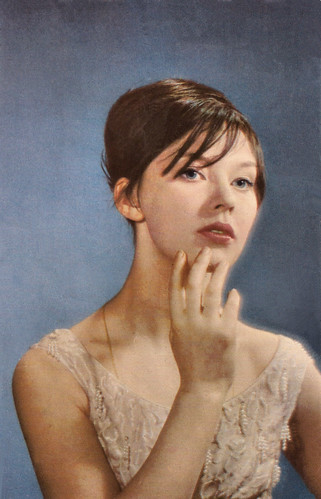
Russian postcard by Izdanije Byuro Propogandy Sovietskogo Kinoiskusstva, no. A 03286, 1969. This postcard was printed in an edition of 200,000 cards. Retail price was 8 kop.
The Most Expensive Film Ever
Lyudmila Mikhailovna Savelyeva was born in Leningrad, Soviet Union (now St. Petersburg, Russia), in 1942.
She studied ballet at the Ballet Academy of Leningrad and worked for the Leningrad Opera and Ballet Theater, now the Mariinski Theater. In 1964 the ballet Sleeping Beauty in which she performed was adapted to film.
Spyashchaya krasavitsa/Sleeping Beauty (Apollinari Dudko, Konstantin Sergeyev, 1964) was seen by director Sergei Bondarchuk, who invited her for the leading part in his next film, Voyna i mir/War and Peace (1965-1967).
The inexperienced Savelyeva played Natasha Rostova opposite the director himself as Pierre Bezukhov. The 7-hour-long film epic won the 1968 Academy Award for Best Foreign Language Film, and brought Bondarchuk a reputation of one of the finest directors of his generation.
Recognized as the most expensive project in film history, Voyna i mir was produced over seven years, at an estimated cost of $100,000,000 (over $700,000,000 adjusted for inflation in 2008).
The film set several records, such as involving tens of thousands of actors and extras from the Red Army in filming of the 3rd two-hour-long episode about the historic Battle of Borodino against Napoleon's invasion, making it the largest battle scene ever filmed.
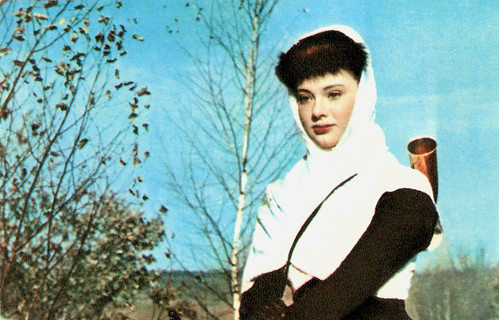
Russian postcard by Izdanije Byuro Propogandy Sovietskogo Kinoiskusstva, no. A 08339, 1969. This postcard was printed in an edition of 500,000 cards. Retail price was 6 kop. Photo: publicity still for Voyna i mir/War and Peace (Sergei Bondarchuk, 1965-1967).
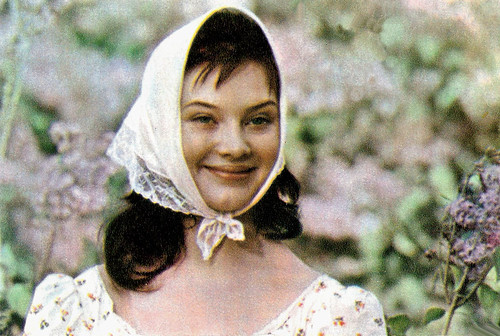
Russian postcard by Izdanije Byuro Propogandy Sovietskogo Kinoiskusstva, no. A 08343, 1969. This postcard was printed in an edition of 500,000 cards. Retail price was 6 kop. Photo: publicity still for Voyna i mir/War and Peace (Sergei Bondarchuk, 1965-1967).
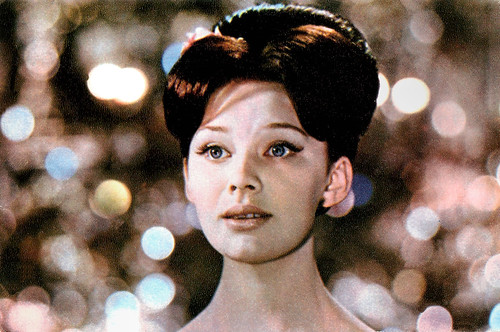
Russian postcard by Izdanije Byuro Propogandy Sovietskogo Kinoiskusstva, no. A 08351, 1969. This postcard was printed in an edition of 500,000 cards. Retail price was 6 kop. Photo: publicity still for Voyna i mir/War and Peace (Sergei Bondarchuk, 1965-1967).

Russian postcard by Izdanije Byuro Propogandy Sovietskogo Kinoiskusstva, no. A 08356, 1969. This postcard was printed in an edition of 500,000 cards. Retail price was 6 kop. Photo: publicity still for Voyna i mir/War and Peace (Sergei Bondarchuk, 1965-1967).
Sunflower
In her next film, Chayka/The Seagull (Yuli Karasik, 1970) Lyudmila Savelyeva proved to be one of the best actresses at interpreting Anton Chekhov's work.
According to reviewer James Brandon at IMDb she "squeezes out more pathos and passion than many actresses encounter in a lifetime. The payoff is near the end of the film; with her character Nina returning to visit her former lover after a two-year absence. Even without the context of the rest of the story, this is an arresting scene, as the actress in her late 20's [actually she was only 23 or 24 at the time, Bob] reads as though she has seen as much suffering as Mother Russia itself has experienced throughout her long history. Within the context of the story, Savelyeva's change is so magically and maddeningly profound that it should bring tears to the eye of even the most jaded film-goer.”
Another triumph soon followed with Beg/The Flight (Aleksandr Alov, Vladimir Naumov, 1970), an adaptation of the play by Mikhail Bulgakov, about the defeat of the White Army in the Russian Civil War of 1918-1921, that caused massive emigration of the upper classes and nobility.
Next she appeared opposite Sophia Loren and Marcello Mastroianni in the Oscar nominated drama I Girasoli/Sunflower (Vittorio de Sica, 1970). This Carlo Ponti production was the first Italian feature film shot in Moscow.
Very popular in the USSR was the Western Vsadnik Bez Golovy/The Headless Horseman (Vladimir Vajnshtok, 1973). This Western, based on a novel by Mayne Reid (a 19th-century writer whose works were much read in the Eastern Europe), was filmed in Cuba by a Soviet crew and includes many Cubans in the cast.
Savelyeva played the love interest, and her presence was partly responsible for the popularity of the film, according to Clarke Fountain at AllMovie.
In the following decades Lyudmila Savelyeva went on to star in several Russian films, but to less acclaim.
Recently she played supporting parts in films by director Sergei Solovyov, including Nezhnyy vozrast/The Gentle Age (2000) and the TV mini-series Anna Karenina (2009), based - once more - on a famous novel by Leo Tolstoy.
Lyudmila Savelyeva is married to actor Aleksandr Zbruyev, and they have one child.
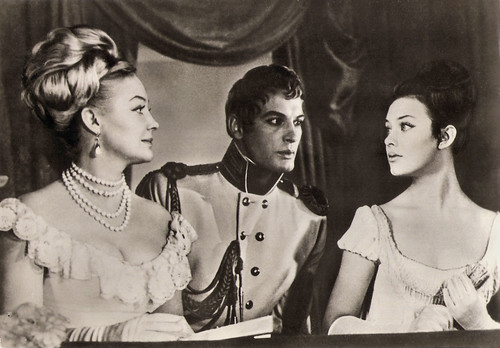
East-German postcard by VEB Progress Filmvertrieb, Berlin no. 2744, 1966. Retail price was 0,20 MDN. Photo: publicity still for Voyna i mir/War and Peace (Sergei Bondarchuk, 1965-1967) with Irina Skobtseva and Vasiliy Lanovoy.
Russian postcard by Izdanije Byuro Propogandy Sovietskogo Kinoiskusstva, no. 1309, 1974. (This postcard was printed in an edition of 20.000 cards. The price was 8 kop.)
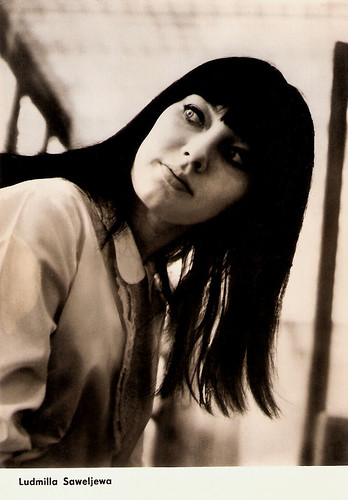
East-German postcard by VEB Progress Filmvertrieb, Berlin, no. 2832, 1967. Photo: Balinski.
Scene from I Girasoli/Sunflower (1970). Source: dvdespecial (YouTube).
Sources: Steve Shelokhonov (IMDb), James Brandon (IMDb), Clarke Fountain (AllMovie), Wikipedia and IMDb.
No comments:
Post a Comment